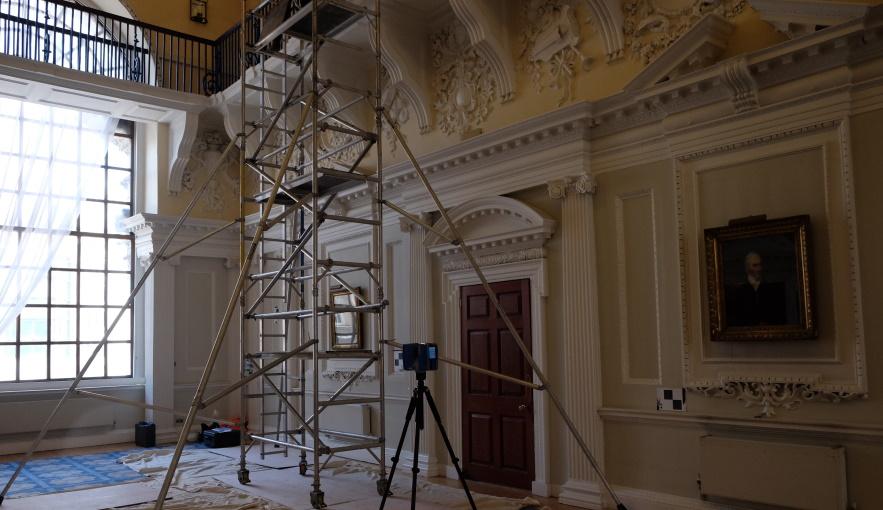
Part of the Bank station capacity upgrade – St Mary Abchurch and Mansion House
The Bank station capacity upgrade involves the construction of new tunnels under several Grade 1 listed historic buildings. The proposed tunnels are in close proximity to Christopher Wren’s St Mary Abchurch and George Dance’s Mansion House.
While only negligible impact is expected in each building, there are significant uncertainties regarding the behaviour of the ground and the building during the scheduled tunnelling works taking place between 2017 and 2021, making monitoring a necessary mitigation measure. CSIC is collaborating with the contractor Dragados and its monitoring arm, Geocisa, under the guidance of London Underground, to monitor the structural response of these buildings with new generation sensing techniques, including fibre optic strain sensing, point cloud and satellite displacement monitoring.
The project will demonstrate the value of new sensing techniques in understanding the behaviour of historic structures affected by ground works. In particular, it will provide new insight into building deformation modes during settlements, which are poorly understood. Previously developed sensing methods applied to London Bridge and Leeds viaduct (page 14) monitoring projects have enabled this deployment including designs for fibre optic cables and fixings and point cloud comparison methods. The monitoring system will be managed with Geocisa, integrating the fibre optic data to their monitoring systems to support knowledge transfer. The project also involves training of Geocisa personnel for this purpose.
Sensing data will be used to provide a critical assessment of analysis methods for tunnelling-induced damage in historic buildings. Accurate modelling techniques and strategies will be identified and this information will be used to improve existing assessment techniques. New model calibration and updating frameworks will be developed to allow the quantification of uncertainty in engineering analyses and clarify how sensing information allows management of this uncertainty.
Employing new sensing techniques to monitor the behaviour of valuable and historically important buildings and structures offers reassurance to asset owners and managers. The detailed data will allow informed assessment and timely intervention, if necessary, to avoid potential costly remedial action.
Contacts
Dr Matthew DeJong, CSIC Co-Investigator, mjd97@cam.ac.uk
Dr Sinan Açıkgöz, Brunel Research Fellow, msa44@cam.ac.uk
Download the full case study
